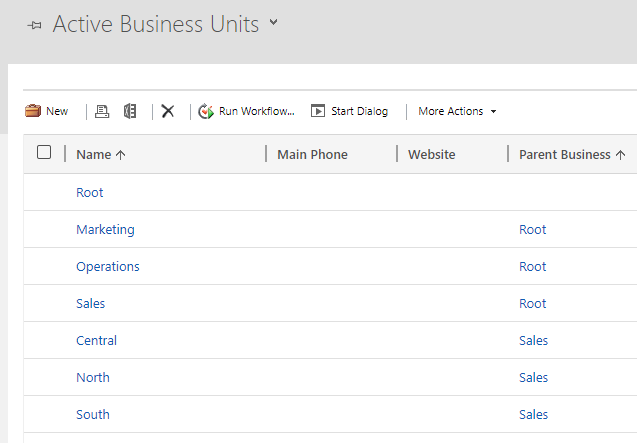Business units provide the basis for security within the CDS. A business unit is a security boundary used to control access to data.
Business units can be arranged in a hierarchy such as in the following diagram:

Every CDS database has a business unit automatically created when the database is created. This is known as the root business unit and is normally named after the environment's name. The root business unit cannot be disabled or deleted.
You can create business units, but these child business units must always have a parent business unit; only the root business unit cannot have a parent. Unlike the root business unit, child business units can be disabled and deleted.
You manage business units from your environment's settings in the Power Platform admin center. The following screenshot shows an example list of business units:

The business hierarchy reflects your organization...



